C4.2 - Inheritance Patterns
Intro to Mendelian Genetics
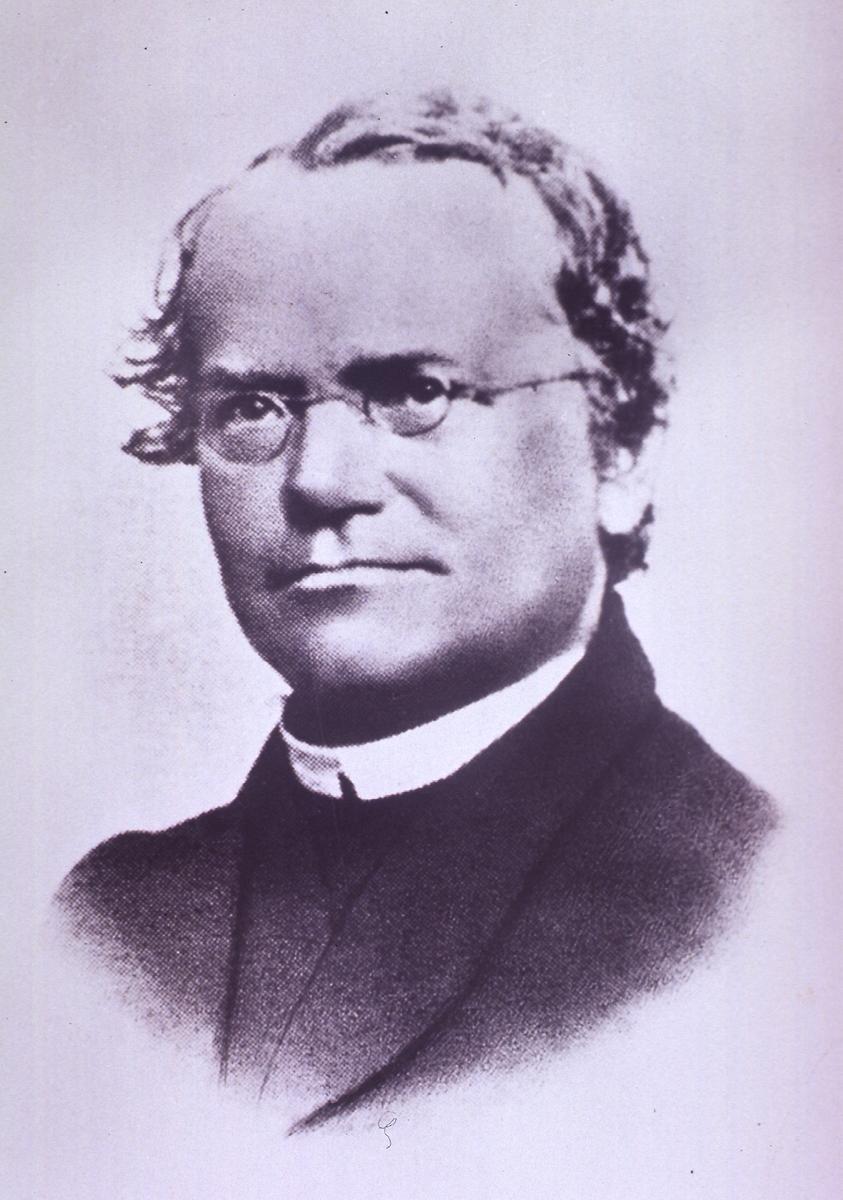
- Mid 19th century
- Gregor Mendel experimented with pea plants and discovered the basis of inheritance
- Mendel examined 7 diff. traits w/ 2 possible variations
- Obtained purebred plants that were true breeding
- Also conducted series of cross-fertilization experiments
- inheritance patterns: predictable patterns seen in transmission of traits from one generation to the next
- hereditary: inherited
- purebred traits: organisms that share similar traits
- true breeding: traits constant throughout generations when self-fertilized
- when self-fertilized, it produces offspring identical in appearance to itself gen. after gen.
- Pea plants excellent for study bcz. of:
- availability
- ease of growth
- self-pollination
- easily identifiable traits
Genetic Terminology
- cross-fertilization: sperm from one species fertilizes eggs
- P generation: parent / base generation
- F1 generation: first filial generation (offspring from parent cross)
- F stands for filius / filia (Latin son / daughter)
- F2 generation: F1 generation cross w/ themselves
- hybrid: cross between two different purebreds
- monohybrid: hybrid cross involving only one trait
- dihybrid: hybrid cross involving two traits
- trait: characteristic of an organism
- dominant trait: trait that is always expressed (capital letter for genotype)
- recessive trait: trait that is present but not expressed (lowercase for genotype letter)
- gene: part of a chromosome that governs a trait
- gene: units of inherited information that carry a code for specific traits or functions
- allele: a gene in an alternate form
- homozygous: purebred for a trait (all dominant or all recessive traits)
- heterozygous: share a dominant and a recessive gene
- genotype: genetic makeup of the organism
- phenotype: appearance of the trait in the organism (tall)
Mendelian Model of Inheritance
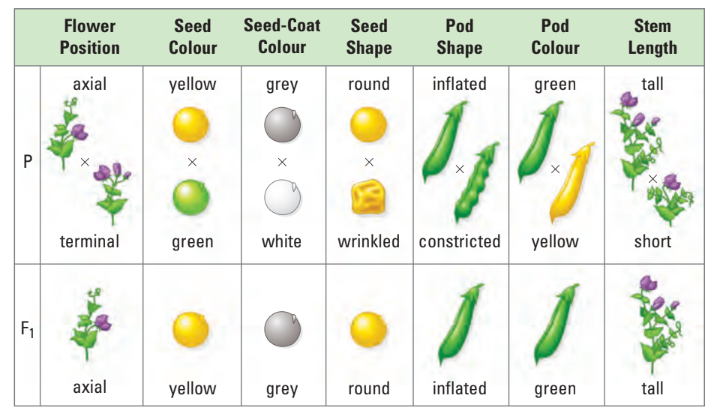
Inheritance Patterns Observed by Mendel
- Genes can exist in different forms
- i.e. peas have yellow-seed allele and green-seed allele
- i.e. pea seed colour genes: yellow and green
- For each gene, an individual organism inherits two alleles, one from each parent.
- if 2 alleles same: homozygous
- if 2 alleles different: heterozygous
- An allele may be expressed as a trait or else hidden in a heterozygous allele
- dominant allele determines the trait of heterozygous individual
- recessive allele not expressed in heterozygous individual
- 2 copies of recessive allele = expression of recessive trait
- Each gamete carries only one allele for each hereditary trait
- … due to separation of allele pairs when gametes form
- allele pairs reformed in fertilization
Test Cross
test cross: cross of individual of own genotype but dominant phenotype w/ homozygous recessive individual
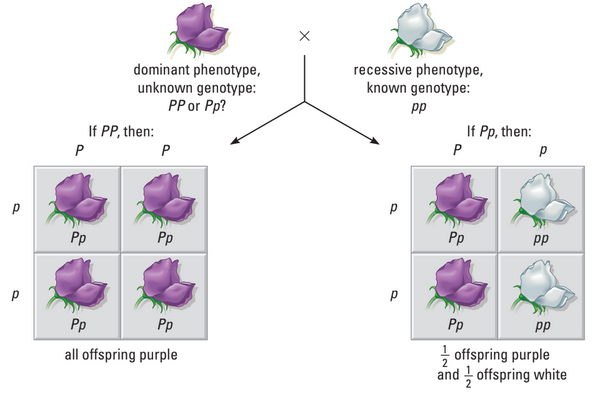
The Principle of Dominance
When individuals of contrasting traits are crossed, only the dominant trait will be expressed.
Crosses Involving One Trait (monohybrid cross)
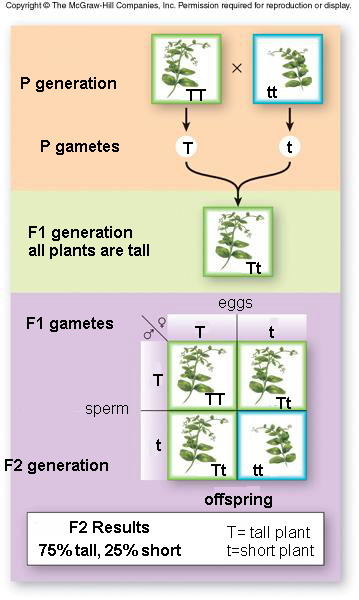
- monohybrid: hybrid cross involving only one trait
- F2 generation has a 3:1 trait ratio
- 75% of offspring looking like one parent from P gen.
- 25% of offspring looking like other parent
- Inherited traits determined by pair of factors (genes)
- Probability displayed in Punnet square (see F1 gametes)
- Punnett square: diagram that shows the expected proportions of all possible outcomes of genetic cross
- named after English geneticist Reginald C. Punnett (1875-1967)
| Phenotypes | Genotypes |
|---|---|
| 3 tall | 1 TT, 2 Tt |
| 1 short | 1 tt |
The Law of Segregation
Factors (two alleles) segregate in the gametes (sex cells), with one in each gamete.
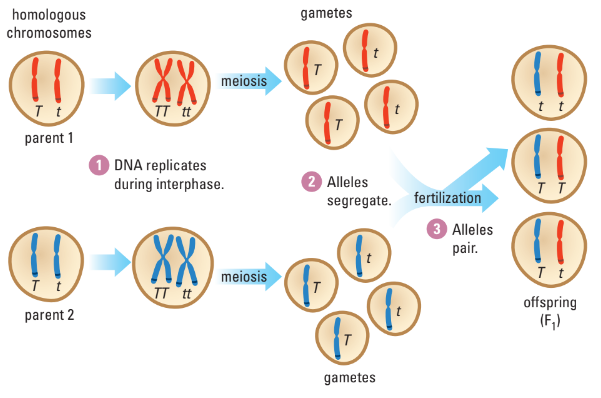
Segregation in meiosis
Crosses Involving Two Traits (Dihybrid Cross)
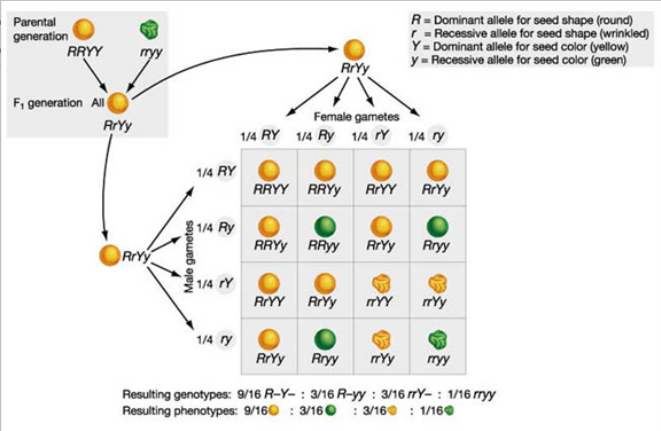
- dihybrid: hybrid cross involving two traits
- Phenotypic ratio of 9:3:3:1 common to other traits
- Allowed Mendel to deduce law of independent assortment
- Test cross performed same way as monohybrid cross
- w/ individual homozygous recessive for both traits
| Phenotype | Genotype |
|---|---|
| 9 round, yellow seeds | 1 RRYY, 2 RRYy, 2 RrYY, 4 RrYy |
| 3 round, green seeds | 1 RRyy, 2 Rryy |
| 3 wrinkled, yellow seeds | 1 rrYY, 2 rrYy |
| 1 wrinkled, green seed | 1 rryy |
The Law of Independent Assortment
The inheritance of alleles for one trait does not influence the inheritance of alleles for another trait.
Other Patterns of Inheritance
Many traits not inherited in simple dominant / recessive relationship
Incomplete Dominance
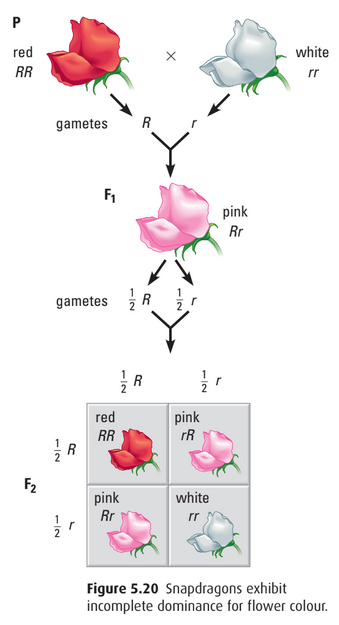
- complete dominance: one allele is expressed while the other isn’t
- incomplete dominance: pattern where phenotype of heterozygous individual falls between 2 parental phenotypes
- Neither allele is dominant
- Offspring phenotype is halfway between parents
- Blending occurs in heterozygous offspring
- Does not display a Mendelian ratio
Co-Dominance
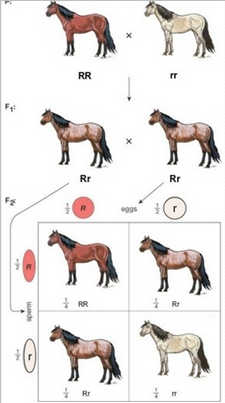
- co-dominance: both alleles are dominant
- Phenotype shows both characteristics
- i.e. chicken plumage, roan colour in horses / cattle
Multiple Access
- multiple access: Genes have >2 alleles
- i.e. human blood types
| Phenotype (blood type) | Genotype |
|---|---|
| A | IA IA / IA i |
| B | IB IB / IB i |
| AB | IA IB |
| O | ii |
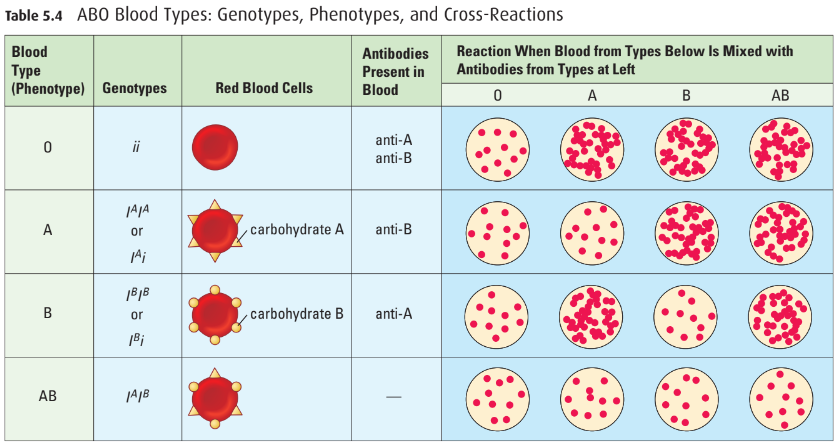
Traits Influenced by Multiple Genes
- polygenic: trait influenced by two or more genes
- i.e. eye colour, skin colour, height of humans
- most individuals in population will have intermediate phenotype
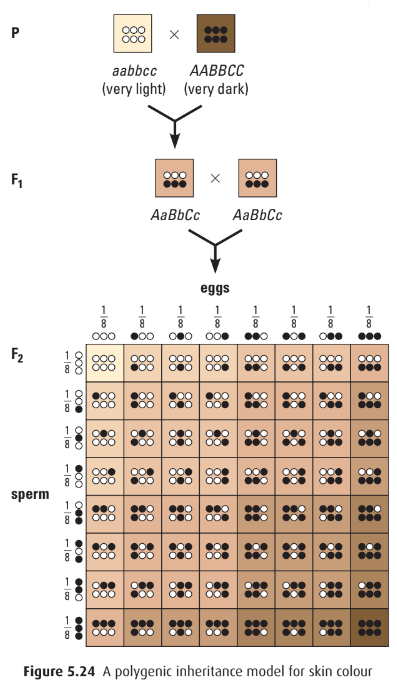
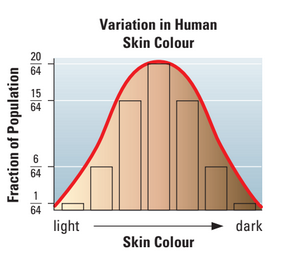
Environment
- genotypes not affected by environment
- environment; conditions in which a cell or organism lives
- phenotypes (expression) may change depending on environment
- i.e. tree’s shape, size, and colour (sunlight and humidity)
- i.e. flower colour (nutrients and pH of soil)
- i.e. fur colour affected by temp. in Siamese cats
- In Humans
- blood-cell counts
- cholesterol levels
- factors: infection, physical activity, altitude, diet, lifestyle, stress, toxins
Mendel’s Significance
- 1865: “Experiments on Plant Hybridization” presented to Brunn National History Society
- showed that it was possible to study biological processes by using genetic processes
- function of genes themselves can be found by study of alleles
- far-reaching ramifications in agriculture and medicine
Mendel’s Legacy
- His work went unrecognized for 35 years
- Reason: Biology could not provide any real evidence for physical units within cells
- … that could correspond to Mendel’s genetic particles
- “My time will come”
- Mendel quote above Mendel museum in Brno